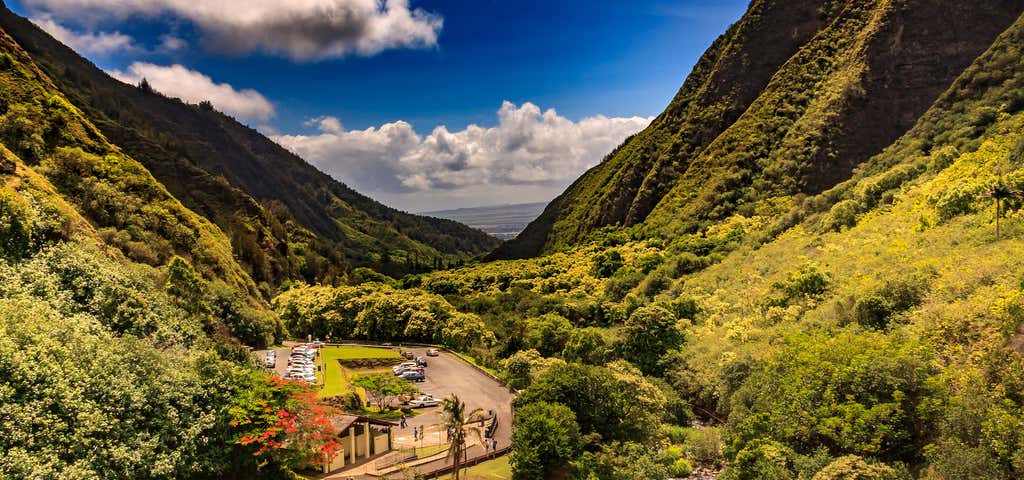Most people's dream Hawaiian vacation involves sitting on the beach... and not much else. While that sounds pretty nice, it would mean missing out on some of Hawaii's most epic and unique adventures! The island's Haleakala National Park is the best place to go to get in touch with your inner explorer. Whether you want to take a hike into the heart of the Hawaiian jungle, conquer a volcano, swim beneath a waterfall, or peer into the universe, Haleakala has it-- seriously, it's one of the most amazing National Parks in the US. If you ever find yourself bored of the beach, check out one of these epic activities in the park!
Tips for visiting Haleakalā National Park:
- The park is open 24 hours a day, so you can go ahead and spend all night on the volcano's summit with your star map, because it has some of the country's best stargazing! Hawaii doesn't have as many big cities, which means way less light pollution and way better views of the night sky-- the air is also remarkably clear, dry and still, the perfect combination. The views are so stellar that there's an observatory on the summit (although it's only occasionally open to visitors for events and the like) but you don't even need a high-powered telescope to have your mind blown by the universe. You can see the Milky Way with your naked eye, and even a good pair of binoculars (which you can even rent from a shop in town) will help you see all the way to Jupiter's moons. -Consider renting a car once you reach Maui. It'll give you the freedom to visit the park whenever and get away from the touristy resort atmosphere and into the real Hawaii. Plus, it's worth it to drive the Hana Highway. The 60-mile stretch of road features a reported 620 curves and 59 bridges, which are sure to get your adrenaline pumping. -If you choose not to rent a car, then stay at a resort that has a shuttle out to the park, or book a guided tour or excursion of the park that will pick you up and take you to Haleakalā. Maui has some stunning resorts and loads of beaches, and it's not hard to find a way to get to the park. Sunrise trips to Haleakalā are popular, despite the hassle of waking up early on your vacation!
The main feature of the park is the Haleakala Crater, a part of the East Maui Volcano, which forms 75% of the island of Maui. From the summit of the volcano, you can see the crater, which is enormous: 7 miles wide and 2,600 feet deep. The crater wasn't actually formed from a volcanic explosion, but as a result of the island's formation. You can look into the crater and see all kinda of volcanic cinder cones, though. The summit is best known for the spectacular views of the Hawaiian sunrise and sunset. Oh, and don't worry-- scientists don't think it's gonna erupt anytime soon. Hopefully.
Oh, and fun fact, "Haleakala" is Hawaiian for "House of the Sun". Beyond being pretty sunny (of course, since this is Hawaii) there's also a local legend that demigod Maui imprisoned the sun in the Haleakala Crater with the help of his grandmother in order to make the day longer. It's appropriate, given that the park is known for its amazing sunrises and sunsets!
One of the first things Americans did when they started to move onto the Hawaiian islands was chop all the trees down for lumber and to clear land for farms and the like. This, of course, proved to be very bad for the land, leading to erosion, drought, and unhealthy soil. In 1927, territorial forester Ralph Hosmer decided to plant a few species of tree to bring forests back to Hawaii-- to see if he could create a viable timber industry. He tested 86 species of trees from all around the world in Hosmer's Grove which is now inside the park, and of those, only 20 survived the harsh climate of Hawaii. Today, those 20 species have taken so well to the climate that some have escaped the grove and are taking over-- they could even be a threat to the native plants. The grove is still a great place for a hike, since it provides plenty of opportunity to check out the flowers and wildlife of Hawaii.
One of the best hikes in all of Haleakalā is the Pipiwai Trail, in the Kipahulu part of the park. It's 4 miles round trip, with little gain in elevation, so it should take around 2 or so hours to complete the loop. Keep your eyes peeled for the massive banyan trees, Makahiku Falls, a dense and lush bamboo forest, and the impressively tall Waimoku Falls. And, since the trailhead is at the end of the Hana Highway, it's great to combine the two into one epic day trip.
"'O'he'o" is Hawaiian for "something special", and once you get a load of this place, you'll find out why it earned the name. You've also maybe heard it called "the seven sacred pools", but there are actually more than seven pools along the Ohe'o Gulch Falls. When water levels are safe, you can dive right into them-- the perfect way to cool off. A few words of caution about swimming-- be careful of falling or loose rocks, watch out for debris going over the waterfalls near the top, and try and keep your head above the water since it might contain some bacteria your system isn't used to.
Want more hikes through the Hawaiian beauty? The Keanae Arboretum features multiple trails over the 6 acre landscape, and features all kinds of unique plant life. It's home to psychedelic rainbow eucalyptus trees, along with more than 150 varieties of tropical plants can be found here, including taro, ginger, papaya and hibiscus. Definitely not the kind of plants you can grow in your home garden!
Since you're on an island, you should indulge in some seafood. Not too far away from the park is Eskimo Candy, a kitschy maritime-themed seafood joint. Tacos, pasta, sandwiches and more are made with fresh shrimp, mahi, and more. If you want to eat like a local, get a poke bowl: they're made with raw tuna, rice and various toppings. If you're not much of a seafood-eater, don't worry: they have burgers, ribs, and chicken, too.
This resort isn't the cheapest option on the island, but it's super close to the park and no hotel will do a better job of making you feel like you're experiencing the real Hawaii than Travaasa Hana. Oceanfront rooms, pools, lessons in fish net throwing, horseback rides, tours, yoga classes, spa services, liver entertainment at night, and tons more make this place a low-key and relaxing place to enjoy a Hawaiian vacation.
Even a short distance outside the National Park, you'll find tons more natural beauty. Waiʻānapanapa State Park is famed for its dramatic black sand beach, made of volcanic basalt. It also have lava tubes, forests, historic religious temples, sea stacks and arches, and more. You can even camp out here!
Some of the coolest stuff on the island is hiding just below the surface, like the awesome Hana Lava Tube. Think of lava tubes as like veins for molten magma. This particular one dumped loads of red-hot lava into the ocean until the volcano went dormant. In most cases, the lava tubes are fragile enough that they cave in, but this lava tube, also known as Ka'eleku Cave, managed to survive. You know how most caves have stalactites and stalactites and stalagmites? Lava tubes have lavacicles instead-- they're like icicles, but formed from cooling lava. There's also a room that looks a lot like a bowling alley, and you'll find holes in the cave ceiling that let light in, just like skylights. One of the cooler rooms in the lava tube is the Cold War-era fallout shelter built right into the cave.
It's right outside the park and makes for a great way to get a better understanding of Hawaii's volcanic history.
Da Kitchen specializes in Hawaiian cuisine, so stop by for a realm authentic taste of island flavors. Katsu, spam, noodles, musubi, mocos, pupus, and more are on the menu, and with the massive helpings, you can't help but leave full and satisfied!
One of the closest hotels to Haleakalā, the Kula Lodge has several rustic cabins where you can spend the night, and an onsite restaurant that serves up great breakfasts (macadamia nut pancakes with coconut syrup and guava passion jam on toast are tasty) and a solid lunch and dinner menu (including yummy pizzas!) Its location on the mountain just below the crater make it an awesome place stay before watching the legendary sunrise (so you don't have to wake up quite as early) or to grab breakfast after watching the big show.
There's no bad time to visit Haleakalā National Park; the weather is perfect year-round. That being said, there are better times to go depending on your wants and needs. If you're looking to save money, spring and fall are your best options. If you want to surf after you visit the park, then head to Maui in the winter. And if you're visiting with kids, the ocean is calmest in the summer... and everyone will be on summer vacation then, anyways!
Roadtrippers
Roadtrippers helps you find the most epic destinations and detours—from roadside attractions to natural wonders and beyond.
Explore More Trip Guides
The ultimate guide to Acadia National Park
- 54 Places
- 35:31
- 1,720 mi














